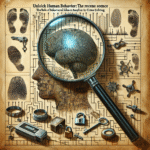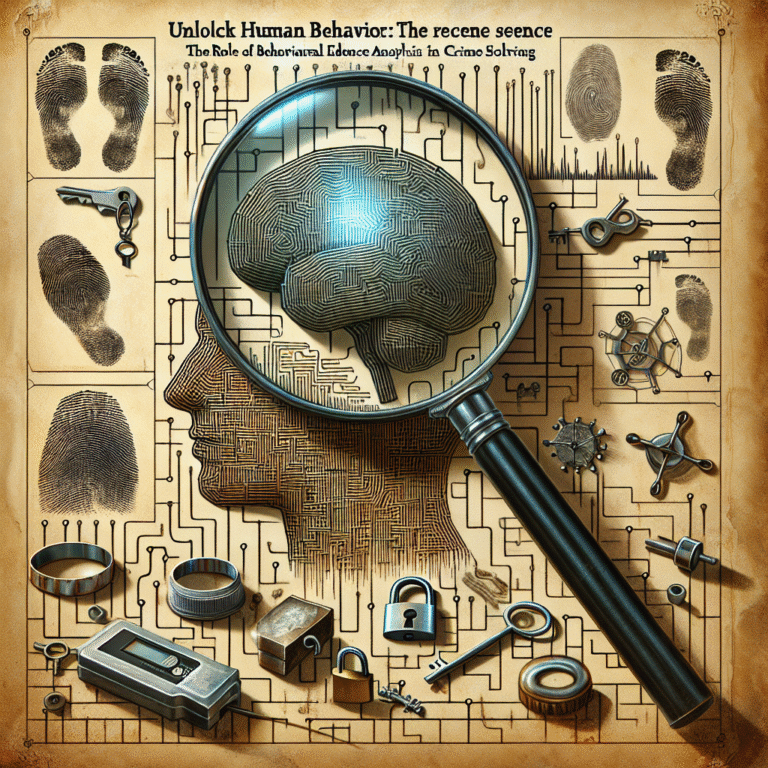
Introduction
In today’s fast-paced and often unpredictable world, the importance of effective risk assessment practices cannot be overstated. Organizations are facing an array of challenges—from cyber threats to supply chain disruptions—that require them to adopt innovative methodologies to identify and mitigate risks. How Technology is Transforming Risk Assessment Practices is a question that resonates across industries as leaders scramble to leverage technology’s full potential.
In this article, we’ll delve into how advancements in technology are reshaping the landscape of risk assessment, providing insights, case studies, and practical takeaways. By the end of this exploration, you’ll not only understand current trends but also gain actionable strategies to implement in your own risk assessment initiatives.
The Traditional Landscape of Risk Assessment
1. Understanding Traditional Risk Assessment
Traditionally, risk assessment relied heavily on manual processes and qualitative judgments, which could be subjective and often led to inaccuracies. Organizations employed methods such as:
- Surveys and Questionnaires: These provided initial insights but often missed nuanced risks.
- Expert Judgment: While valuable, this was prone to biases.
- Historical Data Analysis: Too often, past data misled current assessments due to changing dynamics.
While these methods have their place, the limitations are clear—slow responses to emerging threats and delayed decision-making are common pitfalls.
2. The Need for Transformation
With the rise of globalization, digitalization, and complex supply chains, a more dynamic approach to risk management has become essential. It’s here that technology steps in, fundamentally altering how organizations assess risk.
How Technology is Transforming Risk Assessment Practices
3. Automation: Streamlining Processes
One of the most significant shifts has been through automation. Various technologies—from AI to machine learning—are minimizing human error and accelerating the risk assessment process. Automated tools remove redundant tasks, allowing teams to focus on interpretation and strategic decision-making.
Case Study: Siemens
Siemens, a global tech company, implemented an automated risk assessment tool that analyzes thousands of data points across multiple parameters in real time. As a result, they reduced the risk assessment cycle time by 40%. This improvement not only enhanced accuracy but also allowed for quicker decision-making.
| Metric | Before Automation | After Automation |
|---|---|---|
| Assessment Cycle Time | 10 days | 6 days |
| Accuracy Rate | 75% | 95% |
| Team Focus Shift | 60% tasks on data | 80% on strategy |
4. Big Data Analytics: Unveiling Hidden Risks
Big Data is no less revolutionary. By harnessing large sets of data, organizations can uncover patterns that previously went unnoticed. Data analytics plays a pivotal role in identifying emerging risks.
Case Study: Coca-Cola
Coca-Cola leveraged big data analytics to enhance its risk assessment practices across supply chains. By analyzing social media sentiment and regional sales data, they anticipated demand fluctuations and potential supply disruptions, leading to over a 20% decrease in instances of stockouts.
5. Predictive Analytics: Proactive Risk Management
Predictive analytics combines historical data and statistical algorithms to forecast potential risks effectively. By identifying warning signs before they escalate, companies can take preemptive actions.
Case Study: Walmart
Walmart incorporated predictive analytics into its risk management framework to anticipate weather-related disruptions. By analyzing historical data on supply chains and weather patterns, they adjusted inventory levels proactively, ensuring minimal service interruption during storms.
6. Cloud Computing: Accessibility and Collaboration
Cloud technologies have redefined access to risk management tools, making them available anywhere and anytime. This increased accessibility fosters better collaboration among teams, enabling quicker and more informed decision-making.
Case Study: Google
Google used cloud computing to develop a collaborative risk assessment system. This system allows risk assessments to be updated in real time by various departments across the globe, leading to a 30% improvement in operational risk identification.
Real-World Applications: Key Technologies Shaping Risk Assessment
7. Artificial Intelligence (AI)
AI algorithms can sift through massive amounts of data to identify nuanced patterns. Organizations employing AI in risk assessment can expect to improve their threat detection rates dramatically, minimizing blind spots.
Example: Financial Services
Banks are utilizing AI to analyze transaction behaviors and flag anomalies that could indicate fraud. This continuous monitoring not only enhances security but also builds consumer trust.
8. Blockchain Technology
In industries like finance and healthcare, blockchain’s transparent and immutable nature has made it an essential tool for risk assessment. It helps in tracking transactions or patient data securely, thereby establishing a reliable audit trail.
Benefits and Challenges of Technology Integration
9. Benefits of Technological Transformation in Risk Assessment
- Increased Accuracy: Automation reduces the risk of human error.
- Real-time Insights: Technologies provide immediate and actionable data.
- Enhanced Decision-Making: Access to a wide array of data enables informed decisions.
- Cost Efficiency: Reducing the time spent on assessments translates to cost savings.
10. Challenges to Consider
Despite its advantages, the implementation of technology in risk assessment isn’t without challenges:
- Data Privacy Concerns: Ensuring sensitive data remains protected is paramount.
- Resistance to Change: Employees may be hesitant to adopt new technologies.
- Integration Issues: Merging old systems with new technological solutions can prove complicated.
Conclusion: Embracing the Transformation
As we’ve seen, How Technology is Transforming Risk Assessment Practices marks a pivotal shift toward agility, accuracy, and foresight. From automating routine tasks to leveraging predictive analytics, technology has reshaped the landscape of risk management in profound ways.
Organizations that embrace these changes stand to gain not only in risk mitigation but also in competitive advantage. Start by evaluating your current risk assessment practices and identify areas where technology can be integrated. The time to transform is now.
FAQs
1. What is the role of AI in risk assessment?
AI enhances risk assessment by analyzing vast amounts of data for patterns and anomalies, providing insights that may be missed through manual analyses.
2. How can big data contribute to risk management?
Big Data provides a comprehensive view of potential risks, helping organizations to identify emerging trends and risk factors through advanced analytics.
3. Are there specific industries that benefit more from technology in risk assessment?
While all industries stand to gain, sectors like finance, healthcare, and manufacturing, where risk is highly tangible, benefit significantly from technological advancements.
4. What are the primary barriers to adopting new technologies in risk assessment?
Barriers may include data privacy concerns, employee resistance, and the complexity of integrating new technologies into existing systems.
5. How can organizations start integrating technology into their risk assessment processes?
Begin with an assessment of current practices, identify bottlenecks, and explore available technologies that can streamline and enhance your risk assessments.
By taking actionable steps toward modernizing risk assessment practices, organizations can position themselves not just to survive but to thrive in an uncertain world. The revolution is here—embrace it!















